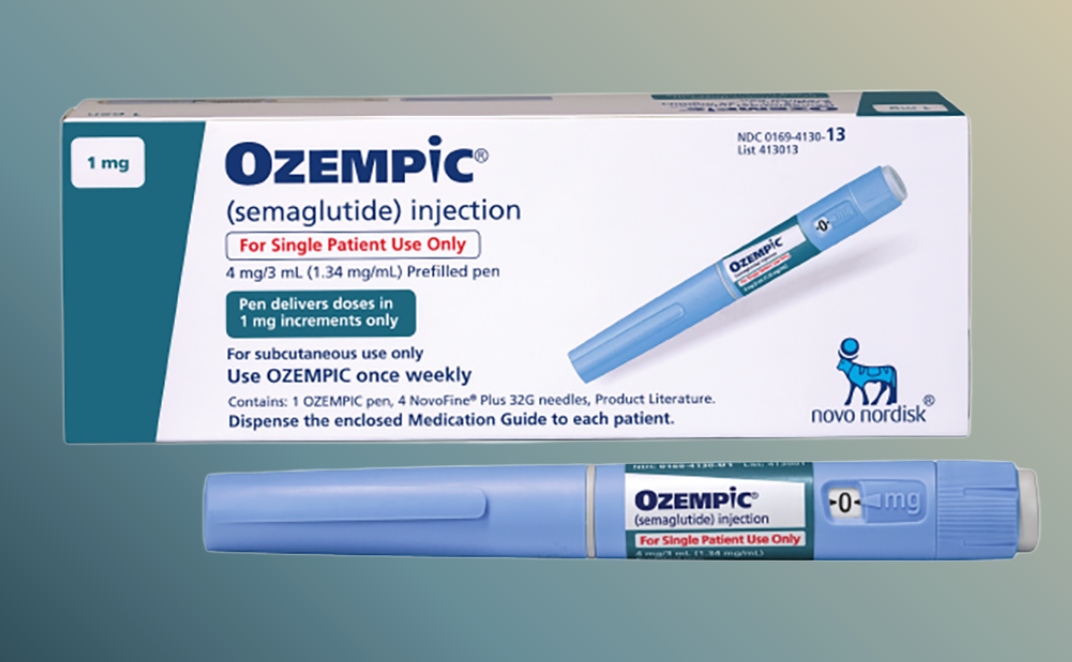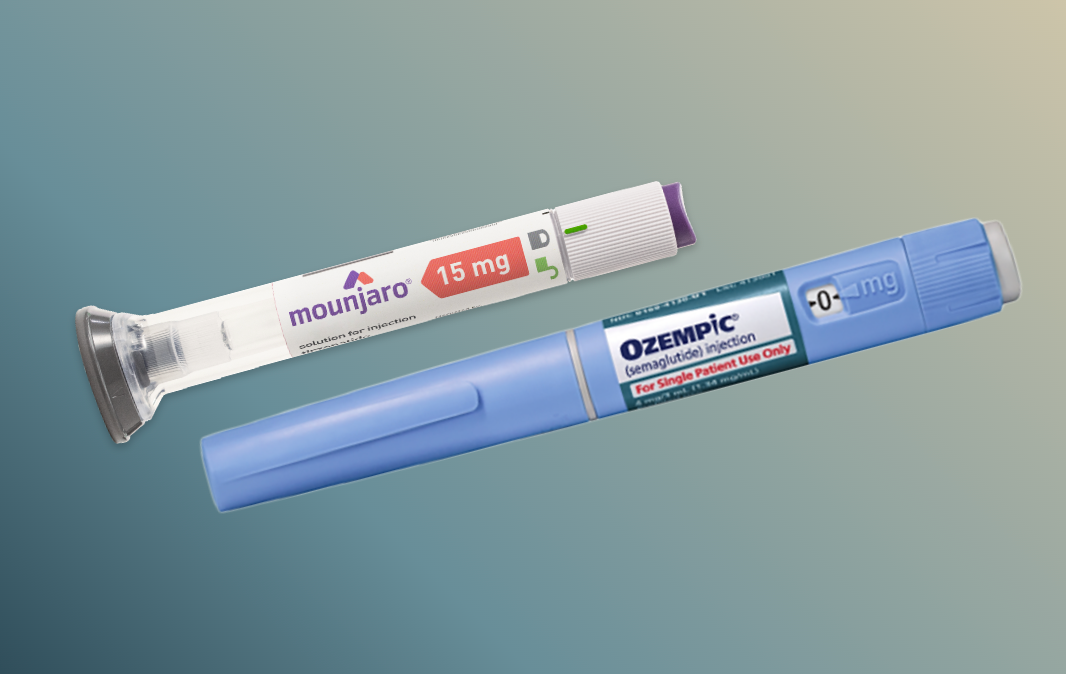How to Stop Taking Ozempic—and What to Do Next
Wondering how to stop taking Ozempic safely—without gaining weight? Get step-by-step guidance and explore next steps for continued weight loss.

Bariendo Team
Team @ Bariendo
Wondering how to stop taking Ozempic safely without gaining weight? Maybe you’re not seeing the weight loss results you expected, or maybe the weekly injections are just getting too expensive. Whatever the reason, there’s a right way— and a wrong way—to stop the medication, and what you do next is just as important.
Without a plan, weight regain can happen quickly. Below, we’ll explain how to stop taking Ozempic the right way, what to expect during the transition, and how you can stay on track with your weight loss goals long-term.
Ready to explore safe, effective alternatives to Ozempic? Discover how Bariendo’s expert-led, non-surgical solutions can help you reach your long-term goals.
How to Stop Taking Ozempic Safely, without Gaining Weight
Stopping Ozempic safely is a process that works best when it’s gradual, thoughtful, and supported by a medical team. Taking the time to taper your dose, adjust your routine, and prepare your body for the change can make a big difference in how you feel—and how your weight responds.
Below, we’ll walk you through five key steps to help you come off Ozempic safely and set yourself up for long-term success.
Step 1: Talk to Your Doctor First
Before you make any changes to your Ozempic routine, it’s essential to speak with your doctor. Stopping the medication too quickly—or without a clear plan—can lead to unexpected changes in appetite, energy levels, and blood sugar. Your provider can help you determine whether it’s the right time to stop and guide you through the safest way to do it.
Step 2: Taper the Dose Gradually
When it comes to stopping Ozempic, going slow is key. According to Dr. Pahamol “Sigh” Jirapinyo, Director of Bariatric Endoscopy Fellowship at Brigham and Women’s Hospital, “Tapering your dose gradually is key. Stopping the medication too quickly can lead to rebound hunger and rapid weight gain.”
Your doctor might recommend stepping down your dose over several weeks. For example, if you’re on 1 mg weekly, they may reduce it to 0.5 mg, then 0.25 mg before stopping entirely. This process not only helps with physical symptoms but also gives you a chance to track how your appetite and eating habits shift along the way. The more aware you are of those changes, the easier it is to adjust your routine and stay in control.
Step 3: Monitor Your Hunger and Energy
As you taper off Ozempic, you may notice shifts in how your body feels day to day. Hunger cues can return gradually, cravings might feel stronger, and energy levels may fluctuate. Paying close attention to these changes is one of the most important things you can do to stay on track.
Consider keeping a simple daily log of your meals, hunger levels, mood, and energy. This helps you spot patterns—like when cravings hit hardest or when your energy dips—and adjust your eating habits or activity levels accordingly. It’s also a useful tool to share with your care team, especially if you’re working with a dietitian or provider to build a post-Ozempic plan that works for your body and lifestyle.
Step 4: Prioritize a High-Protein, High-Fiber Diet
As your appetite begins to return, what you eat becomes even more important. A diet high in protein and fiber can help you feel full longer, stabilize blood sugar, and reduce the urge to overeat—especially during the transition off Ozempic.
Protein supports muscle maintenance and helps regulate hunger hormones, while fiber slows digestion and promotes a lasting feeling of fullness. Focus on including lean proteins like chicken, fish, eggs, tofu, and Greek yogurt, along with fiber-rich foods such as vegetables, berries, legumes, and whole grains. Small changes—like adding a handful of greens to your lunch or swapping refined carbs for quinoa or brown rice—can make a big difference in how satisfied you feel after meals.
Step 5: Incorporate Daily Movement and Strength Training
Exercise isn’t just about burning calories—it’s one of the most effective ways to support long-term weight maintenance, especially after stopping a medication like Ozempic. Daily movement can help boost your metabolism, improve your mood, and keep your energy levels steady during the transition.
Aim for a mix of activities that work for your lifestyle. Walking, cycling, swimming, or even short at-home workouts can help build consistency. Just as important is strength training—adding lean muscle helps your body burn more calories at rest and makes it easier to manage weight over time. You don’t need a gym membership or fancy equipment to get started—bodyweight exercises or resistance bands are a great place to begin.
What to Do Next: Considering Adjunctive Therapies
For many people, stopping Ozempic isn’t the end of their weight loss journey. Many still have a significant amount of weight left to lose—or may already be seeing the scale creep back up. That’s where adjunctive therapies come in. These options can provide the structure and support needed to continue making progress, without relying on long-term injections.
In this section, we’ll look at non-surgical treatments like ESG Stomach Tightening®, as well as other medications that may help you stay on track. If you’re looking for a solution that fits into your lifestyle and supports lasting results, these options may be worth exploring.
ESG Stomach Tightening
For patients who still have weight to lose—or who want a more permanent, medication-free solution—ESG Stomach Tightening® offers a proven, non-surgical path forward. This outpatient procedure reduces the size and capacity of the stomach by 60–75% using internal sutures placed endoscopically (through the mouth). It’s non-invasive, incision-free, and more cost-effective than Ozempic.
By physically limiting stomach volume and slowing how quickly food passes through the digestive system, ESG works with your body’s natural signals to support long-term weight loss. Patients experience:
- Easier appetite control: Feel full faster and stay full longer.
- Slowed gastric emptying: Food takes longer to leave the stomach, reducing hunger between meals.
- Improved satiety hormones: ESG helps regulate hormones that influence fullness and cravings.
- Reduced emotional and uncontrolled eating: Studies show ESG positively impacts eating behavior.
- Durable results: On average, patients lose 18-20% of their total body weight, with effects lasting 5+ years.
Unlike weekly injections, ESG is a one-time procedure. Recovery usually takes 2–3 days, and patients return to normal activities quickly. Bariendo—founded by the inventor of the ESG procedure—offers best-practice protocols and personalized care that extends beyond the treatment itself. Every patient receives 12 months of follow-up support, including nutrition coaching, exercise guidance, and medical check-ins to help them maintain their results for years to come.
Curious whether ESG is right for you? Take this two-minute quiz to see if you qualify!
Other Non-Injectable Medications
Our team may also recommend other weight loss medications as part of a personalized plan to help you continue making progress. These alternatives can support appetite regulation, metabolic function, or both—depending on your needs. Some medications come in oral form, which may feel more manageable than weekly injections. They may also be paired with nutritional counseling or lifestyle coaching for even better outcomes.
While results may not be as dramatic as Ozempic or ESG, these options can still play a meaningful role in preventing rebound weight gain—especially when used as part of a structured, medically supervised plan. If you’re not sure which path is right for you, a conversation with your care team can help guide the next step based on your health history, weight loss goals, and preferences.
What to Expect When You Stop Taking Ozempic
Coming off Ozempic is a transition, and understanding what’s normal can help you feel more prepared. While everyone’s experience is a little different, there are some common changes that tend to occur once the medication is out of your system. Knowing what to expect—and having a plan in place—can make all the difference.
Below are some of the most common effects people notice after stopping Ozempic, especially if it’s done without a gradual taper or ongoing support.
Return of Cravings and Appetite
One of the biggest changes people notice after stopping Ozempic is a shift in appetite. Without the medication’s appetite-suppressing effects, you may start to feel hungrier between meals or crave foods you hadn’t thought much about while on the drug. This isn’t a sign of failure—it’s your body returning to its baseline without the GLP-1 support.
The key is to anticipate this change and respond with structure. Eating meals at regular intervals, choosing high-protein and high-fiber foods, and staying hydrated can help you manage these renewed hunger cues. Working with a registered dietitian can also be incredibly helpful in adjusting your eating habits post-Ozempic in a way that still supports your goals.
Blood Sugar Fluctuations and Return of Diabetes Symptoms
If you were prescribed Ozempic to manage type 2 diabetes or prediabetes, stopping the medication may lead to changes in blood sugar control. Without GLP-1 support, your body may produce less insulin or struggle more with blood sugar spikes after meals—especially if dietary habits aren’t carefully adjusted.
Some people may notice symptoms like increased thirst, fatigue, or more frequent urination. These shifts can be subtle or significant, depending on how well blood sugar was managed prior to starting Ozempic. That’s why it’s essential to involve your doctor when planning to stop. They can monitor your glucose levels, recommend medication adjustments if needed, and help you avoid a sudden return of diabetic symptoms.
Potential Withdrawal Symptoms
Ozempic doesn’t cause traditional withdrawal symptoms in the way some medications do—but that doesn’t mean the transition is symptom-free. As your body adjusts, you may experience side effects that feel like a rebound, including increased hunger, stronger cravings, lower energy, or shifts in digestion.
These symptoms aren’t dangerous, but they can be discouraging if you’re not prepared. The key is to view them as part of the adjustment process. Tapering slowly, prioritizing protein and fiber, getting enough sleep, and staying consistent with movement can all help minimize these effects. If symptoms feel overwhelming or disruptive, your provider may recommend additional tools—like temporary medication support or dietary changes—to ease the transition.
Rebound Weight Gain
Rebound weight gain is one of the most common concerns for people coming off Ozempic—and it’s a real risk, especially if the medication is stopped abruptly or without lifestyle support. Clinical studies have shown that ⅔ of people regain a significant portion of the weight they lost within a year of stopping GLP-1 medications.
But this outcome isn’t inevitable. Weight regain tends to happen when hunger returns, old eating patterns creep back in, or there’s no structured plan in place. That’s why gradual tapering, dietary changes, regular physical activity, and adjunctive therapies like ESG can make such a difference. With the right support, it’s absolutely possible to continue to lose weight.
Frequently Asked Questions
Do You Have to Take Ozempic Forever to Keep Weight Off?
No, you don’t have to take Ozempic forever to maintain your weight loss, but you will likely need to choose an alternative treatment plan. Long-term treatment options like ESG can help support sustainable results without ongoing medication.
How Do You Keep Weight Off After Ozempic?
To keep weight off after Ozempic, focus on healthy lifestyle habits and long-term support. This includes regular physical activity, a high-protein, high-fiber diet, and consistent meal timing. Many people also benefit from adjunctive therapies like ESG, which can help manage hunger and portion sizes long after the medication is stopped.
How Long Should You Be On Ozempic for Weight Loss
Most people use Ozempic for several months to over a year, depending on their weight loss goals. Your doctor may recommend staying on the medication until you reach a stable weight or begin to plateau. Always work with your provider to determine the right time to taper off based on your progress and health needs.
Life After Ozempic Starts with a Plan
Stopping Ozempic is a big decision—but it’s also an opportunity to take control of your next step with confidence. Whether you’re looking to maintain your weight, lose more, or simply transition away from injections, what you do next matters.
By tapering gradually, staying consistent with your habits, and exploring options like ESG Stomach Tightening®, you don’t have to rely on medications to stay on track. At Bariendo, we specialize in helping patients move forward with science-backed, personalized solutions that last.
You don’t have to figure it out alone. Let’s talk about your next step—book a free consultation with Bariendo today!

